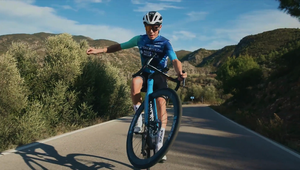
Why Dyson, Google and the BBC Believe That a Design Ethos is Vital

From Apple and Google to the BBC and Dyson, the most successful brands have a powerful Design Ethos at their heart. Greater than just a visual identity or logo, the Design Ethos defines the personality and experience of the entire organisation for its stakeholders and inspires staff and consumers.
So how do brands create their Design Ethos, embed it across their organisation and keep it alive? And how can a Design Ethos transform an organisation?
To discuss how this impacts all elements of a brand, Wolff Olins recently brought together senior designers and marketers from Dyson, Google and the BBC, where we delved into the lost art of the Design Ethos.
“We've got a really strong ethos at Dyson,” said Chris Roberts, creative director, image and identity at Dyson, the technology company founded by inventor James Dyson. “Our mission is to solve problems that others choose to ignore with surprising inventions that defy convention - so they're not normal and not usual - but crucially work better. That’s what James was trying to do when he invented the first bagless vacuum and it's what we still do today,” said Roberts. “Having a leader like James makes it really easy for a business to have an ethos because actually Dyson's ethos and Dyson's values are a reflection of James's” he added.
At Dyson, the Design Ethos is evident in the work environment. At the company’s Malmesbury campus there is an iconic Mini car display that has been sawn in half. “James believes that good design is about how something works, not how it looks. It’s what’s on the inside that counts” Chris explained. An English Electric Lightning jet is also suspended from the café ceiling. “James believes that aviation is the pinnacle of advanced engineering. The Lighting was the first jet capable of sustained supersonic flight.”
Inspiring the workforce with powerful and thought-provoking office design is a mark of many successful organisations and shows the importance of getting the ethos to flow through every aspect of its operations.
At Google, the Design Ethos is also visible in its offices, which feature playful and surprising elements such as fire poles, Lego play areas, and even hidden rooms. “Google was very early in seeing the value of investing in the office environment,” said Margaret Cyphers, UX director at Google. “What we're trying to demonstrate isn't that creativity looks a certain way; we're trying to show the value of surrounding yourself in these types of beautiful elements. There’s attention to detail, but they're fun and a little quirky and innovative.”
Not dissimilar to the founder-led ethos at Dyson, based on the vision of an individual and centred on the product, Google’s approach is focused on the user, explained Margaret. “We are designing for everyone, building for everyone, and making sure that all of the products at Google are inclusive and human.
“It’s making everything simple and beautiful. When you think of a User Interface as simple and beautiful, and you are putting the user first, it gives us a new appreciation when we're doing the product design - that we're making it for humans, and that we want them to enjoy the experience.”
Meanwhile Laurence Honderick, head of design at BBC Creative, says the BBC’s Design Ethos has to be flexible enough to flow through all the different services the organisation provides. He says the idea of creating 'One BBC' is the most interesting challenge for the Design Ethos. “We have an obligation in our Royal Charter to serve everyone and all audiences so naturally our audience is amazingly broad, and our values like creativity and trust are experienced in very different ways depending on a person’s relationship with the BBC.”
This requires a fluid approach to the Design Ethos. “To be successful, you need to have enough cohesion to be recognised by your audience, understood, and have a certain degree of singularity - you need to be one brand. At the same time, for us, it happens in a way that is not singular, because BBC One, BBC Three and iPlayer, News and Sport and Bitesize are all going to convey the values of the BBC, but they are going to do so in different ways, in order to express themselves. What you need is a flexible system supported by strong fundamentals,” he says.
For us at Wolff Olins, we’ve been particularly inspired in our Design Ethos thinking by a, perhaps, surprising person. Bruce Lee’s ethos, ‘Be Water, My Friend’, is explained in a bestselling book of the same name, written by his daughter Shannon and published in 2020, nearly 50 years after his tragic death.
This ‘Be water’ ethos advocates flexibility in body and mind to reveal a path to an enlightened way of being.
For Laurence, this philosophy resonates. “This flexible system is the fundamental fluidity that Bruce Lee was talking about – when you pour water into a cup, the water must become the cup,” he says. “And though it is taking on a new shape and form, we must still retain that fundamental essence of the BBC at its heart.”
Design is not simply a veneer plastered over a product, but the underlying function and feeling of the product experience. The design ethos unifies everything from the look and feel of the products to the design and architecture of the headquarters.
The world’s most successful brands are defined by their underlying ethos – indeed that is the very definition of a brand. To ensure long-term success, every brand needs to discover its Design Ethos and spread it through every fibre of its organisation.















